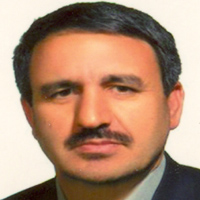Petrography, geochemistry and tectonic setting of the Gharabolagh intrusive mass in North Hashtrud, East Azarbaijan
The plutonic body of Bostanabad-Meyaneh belt formed during the Cenozoic magmatism on the weast Alborz-Azarbaijan zone. The Oligocene plutonic rocks consist of alkaligranite, granodiorite and biotitegranite, intruded into the Eocene volcanic-sedimentary rocks. The predominant textures are granular, graphic and perthite. Geochemical evidence reveals that they are cogenetic and have features typical of calk-alkaline to high-K calk-alkaline, metaluminous with I-type nature. Enrichment in LILE (i.e. Cs, K, Rb and Th) rather than HFSE (Eg., Nb, Zr and Ti), typical negative anomalies of Nb and Ti and LREE enrichment in comparison to HREE, are important characteristics indicating that these rocks were formed in a magmatic belt in a subduction zone. Positive anomalies of Pb and K demonstrate the involvement of continental crust in evolution of parental magma. During magma ascent, assimilation processes, fractional crystallization and crustal contamination (AFC) took place simultaneously. Tectonic discrimination diagrams show formation of these rocks in VAG, Syn-COLG event and an mature continental arc setting with less than 45 Km crustal thickness. Primitive magmas should have formed by low degree melting of an enriched mantle wedge peridotite.
-
Geochemistry and emplacement environment of intrusive bodies of Shele Boran Mo-Cu deposit (Northeast of Ahar, East Azarbaijan)
Seyed Ghafour Alavi *, Mansour Kazemi Rad, , Mohammadreza Hosseinzadeh
Petrology, -
Mineral chemistry and thermobarometry of Marzroud-Nabijan intrusive rocks (SW Kaleyba, NW Iran)
Sadiqeh Sadri, Nasir Amel *,
Petrology, -
Mineral chemistry, thermobarometry and genesis of clinopyroxenes in Silurian mafic metavolcanic rocks of Maku, North West of Iran
Farzaneh Valinasab Zarnagh *, , , Hossein Azizi
Geosciences Scientific Quarterly Journal, -
Mineral chemistry, tectonic setting and thermo-barometry of the gabbro-diorite intrusive body (south of Tikmehdash), East-Azarbaijan
Marzieh Rezaeiaghdam, *, , Ghahraman Sohrabi
Petrology,



